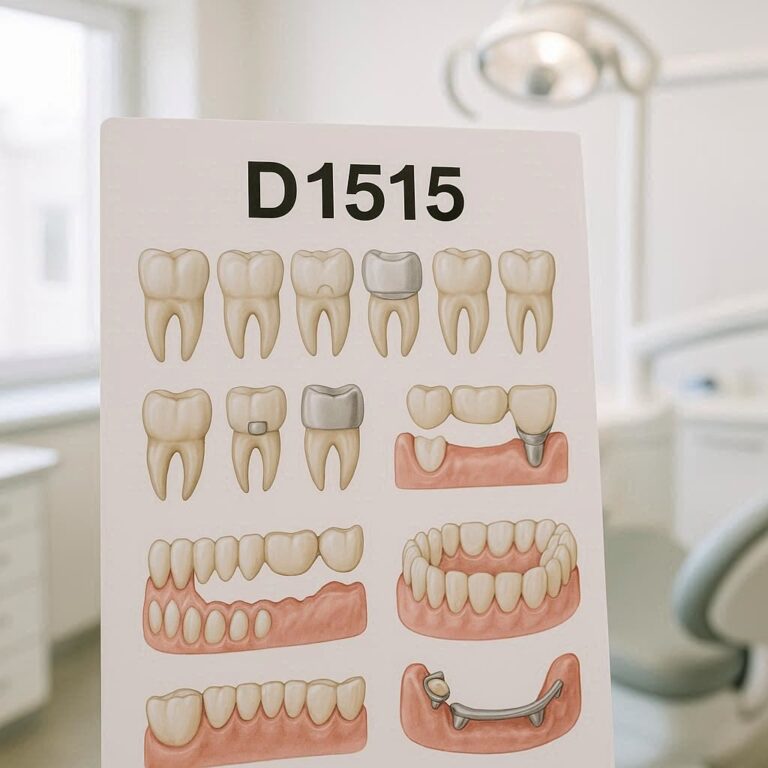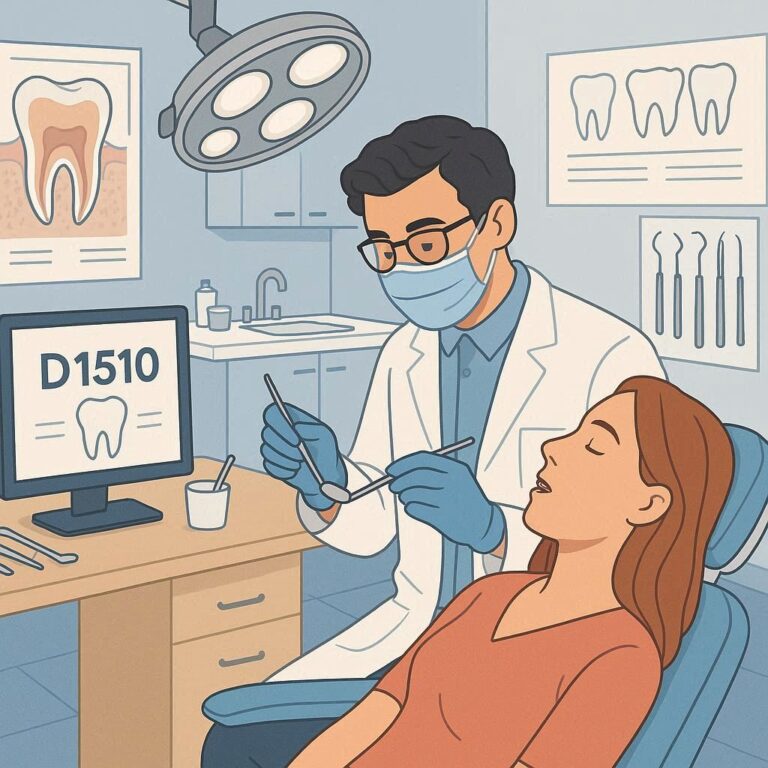Common Dental Codes: Understanding Procedures, Fees, and Diagnoses for 2024
Dental coding plays a critical role in the delivery of oral healthcare services. As dental procedures become more complex and widespread, understanding the codes used to describe these procedures is essential for dentists, insurance providers, and patients alike. This comprehensive guide delves into the world of common dental codes, providing an in-depth exploration of procedure fees, commonly used codes, and the intricacies of dental billing and diagnosis.

2. What Are Common Fees for Dental Procedures by Code?
Overview of Dental Procedure Costs
The cost of dental procedures can vary significantly depending on the procedure itself, the region, and whether the patient has dental insurance. Understanding the typical fees associated with common dental codes helps patients anticipate costs and aids dentists in transparent billing practices.
Breakdown by Common Dental Codes
Dental procedure codes, known as Current Dental Terminology (CDT) codes, are used to standardize billing across the industry. Each code corresponds to a specific procedure, with fees varying based on the complexity and time required for the procedure. For instance:
- D0120: Periodic Oral Evaluation – approximately $50 to $100
- D1110: Adult Prophylaxis (Cleaning) – approximately $75 to $150
- D2330: Resin-Based Composite – One Surface, Anterior – approximately $150 to $250
These figures provide a general idea of costs, though actual fees may vary.
Regional Variations and Insurance Impacts
Geographical location plays a significant role in dental costs, with urban areas typically seeing higher fees than rural regions. Additionally, insurance coverage can drastically reduce out-of-pocket expenses, though this varies by provider and plan.
3. Commonly Used Dental Codes Cheat Sheet
Essential Dental Procedure Codes
For both dental professionals and patients, having a quick reference to commonly used dental codes is invaluable. This section presents a cheat sheet that includes codes for routine procedures, diagnostic services, and restorative treatments.
- Diagnostic:
- D0150: Comprehensive Oral Evaluation
- D0274: Bitewings – Four Radiographic Images
- Preventive:
- D1206: Topical Application of Fluoride Varnish
- D1351: Sealant – Per Tooth
- Restorative:
- D2391: Resin-Based Composite – One Surface, Posterior
- D2740: Crown – Porcelain/Ceramic Substrate
Quick Reference for Dentists and Patients
The cheat sheet format allows for easy reference during consultations and treatment planning, ensuring that both parties are well-informed.
Importance of Accurate Code Usage
Accurate coding is essential for proper billing, compliance with insurance requirements, and avoiding potential legal issues. Misuse or incorrect coding can lead to claim rejections and delays in treatment.
4. Common Dental Procedure Codes
Most Frequently Used Procedure Codes
Dental procedures range from routine cleanings to complex restorative work, each requiring a specific code for billing purposes. Understanding the most frequently used procedure codes provides insight into the commonality of certain treatments and their impact on dental practices.
Explanation of Procedures Covered by Each Code
Each CDT code corresponds to a specific procedure, with a detailed explanation of what the procedure entails:
- D2950: Core Buildup, Including Any Pins
- Used when a tooth requires additional support before placing a crown.
- D4341: Periodontal Scaling and Root Planing – Four or More Teeth Per Quadrant
- A deep cleaning procedure used to treat gum disease.
How Codes Influence Billing and Treatment
The use of specific dental codes influences how treatments are billed and can affect insurance reimbursements. Accurate coding ensures that dentists are fairly compensated and that patients receive appropriate care.
5. Common ICD-10 Dental Codes
Introduction to ICD-10 and Its Role in Dentistry
The International Classification of Diseases, Tenth Revision (ICD-10), is a system used by healthcare providers to classify and code all diagnoses, symptoms, and procedures. In dentistry, ICD-10 codes are used to describe the diagnosis that necessitates a particular dental procedure.
Key ICD-10 Codes Relevant to Dental Practices
Some of the most relevant ICD-10 codes in dental practice include:
- K02.9: Dental Caries, Unspecified
- K04.7: Periapical Abscess Without Sinus
- K05.10: Chronic Gingivitis, Plaque-Induced
Linking ICD-10 Codes to Dental Procedure Codes
Linking ICD-10 codes with CDT codes is crucial for billing purposes, ensuring that the diagnosis justifies the procedure performed.
6. Most Common Dental Codes
Analysis of the Most Commonly Billed Dental Codes
Certain dental codes are used more frequently than others, reflecting the most common treatments provided in dental practices. This section analyzes the usage patterns of these codes, providing insights into patient care trends.
Case Studies and Examples
Real-world examples illustrate how these codes are applied in various scenarios, such as routine exams, fillings, and periodontal treatments.
Trends in Dental Code Usage
Recent trends indicate shifts in the most commonly used dental codes, driven by changes in patient demographics, advancements in dental technology, and evolving healthcare policies.
7. Common Dental Codes 2024
Updates to Dental Codes in 2024
Each year, updates to the CDT code set are made to reflect new procedures, technologies, and changes in dental practices. The 2024 updates include new codes for emerging treatments and revisions to existing codes to improve clarity.
New and Revised Codes
- D3150: New Code for 3D-Printed Crowns
- D0415: Revised Code for Digital Imaging
These updates ensure that dental practices remain current with industry standards.
Implications for Dental Practices
Understanding and implementing the 2024 updates is crucial for maintaining compliance, optimizing billing processes, and ensuring high-quality patient care.
8. Common Dental Diagnosis Codes
Overview of Dental Diagnosis Codes
Diagnosis codes are used to describe the condition being treated, providing context for the procedures performed. This section covers the most common dental diagnosis codes and their significance in treatment planning.
Common Diagnoses and Their Corresponding Codes
Common diagnoses include:
- K05.6: Periodontitis
- K03.81: Cracked Tooth
Each diagnosis has specific treatment protocols and corresponding CDT codes.
Role of Diagnosis Codes in Treatment Planning
Diagnosis codes are essential in developing a treatment plan, guiding the selection of appropriate procedures, and ensuring accurate billing.
9. Common Dental Procedure Codes Used in Direct Care Programs
Dental Codes in Government and Private Care Programs
Direct care programs, including Medicaid and private insurance plans, use specific dental codes to standardize treatment and reimbursement processes. This section explores how these codes are applied in various programs.
Specific Codes for Medicaid and Other Direct Care Programs
Medicaid, for instance, uses a set of common dental codes tailored to the services covered under the program. Examples include:
- D1206: Topical Fluoride Varnish
- D1351: Sealant Application
Cost Analysis and Reimbursement Considerations
Understanding the cost implications of these codes helps dental practices manage their finances and optimize care delivery within these programs.
10. Conclusion
Understanding dental codes is essential for ensuring accurate billing, efficient practice management, and high-quality patient care. This comprehensive guide provides the knowledge needed to navigate the complexities of dental coding, offering insights into procedure costs, diagnosis codes, and the latest updates for 2024.
11. FAQs
- What is a CDT code?
- CDT codes are used to describe dental procedures for billing purposes.
- How often are dental codes updated?
- Dental codes are updated annually to reflect new procedures and changes in the field.
- What is the difference between CDT and ICD-10 codes?
- CDT codes describe procedures, while ICD-10 codes describe diagnoses.
- How can I find out the cost of a specific dental procedure?
- Costs can vary by region and insurance coverage; consult your dentist for an estimate based on the specific code.
- Why are dental codes important?
- Dental codes ensure standardized billing and help maintain compliance with insurance and legal requirements.
12. Additional Resources
- American Dental Association (ADA): www.ada.org
- Centers for Medicare & Medicaid Services (CMS): www.cms.gov
- ICD-10 Data: www.icd10data.com


